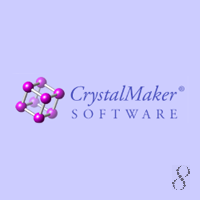


Using magnetic susceptibility and neutron powder diffraction we identify low temperature magnetic transitions for all three compounds characterized by the onset of long-range antiferromagnetic order with moderate frustration indexes. Using TM = Mn, Co and Ni we report on the structural effects of changing the TM site and how they may influence the magnetic structure. These materials link highly distorted TMO 6 octahedra via non-magnetic 2 + linkers. Here we report on the magnetic properties of one such family of materials, the transition metal ( TM) selenite hydrate compounds with chemical formula TM 3(SeO 3) 3H 2O. One approach to finding such lattices is to design them chemically by using non-magnetic linker ligands. As the former leads to much simpler theoretical treatments it is generally favored and so magnetic sublattices with geometric frustration are sought after. Generally, one has two strategies to achieve magnetic frustration: through geometric means or through interactions with different requirements and length scales. The [M.Recently frustrated magnetic materials have once again captured the condensed matter community’s interests due to renewed evidence of being the best route to achieve quantum spin-liquid type physics.


Density functional theory calculations indicate that the dominant magnetic interaction, J 1, occurs along a malonate group via a carboxylate and links two transition metals within the same layer, while other interactions (inter- or intra-layer) are much weaker, so that these compounds present the dominant characteristics of 2D-antiferromagnets. The M = Co malonate exhibits a non-collinear magnetic structure intermediate between the two latter, with components along b and c. Magnetic moments are collinear to b for the former and more » to c for the latter. These layers are stacked antiparallel (M = Fe) or parallel (M = Mn, Ni) in the ( a, c) plane. The magnetic structures are characterized by antiferromagnetic layers perpendicular to. Neutron powder diffraction experiments reveal the establishment of a long range magnetic order at low temperature in the Pbca Shubnikov magnetic group. While the Cu-based material is a weak ferromagnet, all other members present antiferromagnetic interactions. In this work, the recently discovered metal-malonate compounds of formulae Na 2M(H 2C 3O 4) 2♲H 2O with M = Mn, Fe, Co, Ni are investigated for their magnetic properties.


 0 kommentar(er)
0 kommentar(er)
